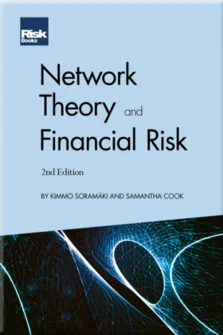Creating and describing networks
Creating and describing networks
Preface
Acknowledgements
An introduction to financial networks
Creating and describing networks
Identifying important nodes: Centrality metrics
Uncovering latent structure: Clustering and community detection
Finding hidden links: Projection networks
Estimating unknown links: Network reconstruction
Fast insights: Visualising networks
Financial cartography: Network layouts
Brass tacks: Complexity reduction
Financial stability and systemic risk
Design and simulation of financial market infrastructures
Monitoring and stress testing financial market infrastructures
Financial crime and conduct risk
Financial markets
References
There are many different network structures that arise naturally or have proven to be useful for modelling real phenomena. This chapter will present many types of networks and show how to generate instances of them. In addition, it will present some common network summary measures that are useful for describing and comparing networks.
THE LANGUAGE OF NETWORKS
A graph is a set of nodes (also commonly referred to as vertices), pairs of which may be joined by links (also commonly referred to as edges in undirected networks, or arcs in directed networks; see below for the definitions of directed/undirected networks). For example, in a graph whose nodes represent people, the links could represent friendships or family relationships. Geographic locations can be linked by motorways or airline routes. We have already introduced payment systems as one example of financial networks. Nodes and links may have properties, and we use the term “network” to refer to graphs with properties. In a network where nodes represent banks and links represent payments, for example, node properties might include total holdings, location of the company headquarters and number of counterparty banks (ie
Copyright Infopro Digital Limited. All rights reserved.
As outlined in our terms and conditions, https://www.infopro-digital.com/terms-and-conditions/subscriptions/ (point 2.4), printing is limited to a single copy.
If you would like to purchase additional rights please email info@risk.net
Copyright Infopro Digital Limited. All rights reserved.
You may share this content using our article tools. As outlined in our terms and conditions, https://www.infopro-digital.com/terms-and-conditions/subscriptions/ (clause 2.4), an Authorised User may only make one copy of the materials for their own personal use. You must also comply with the restrictions in clause 2.5.
If you would like to purchase additional rights please email info@risk.net











